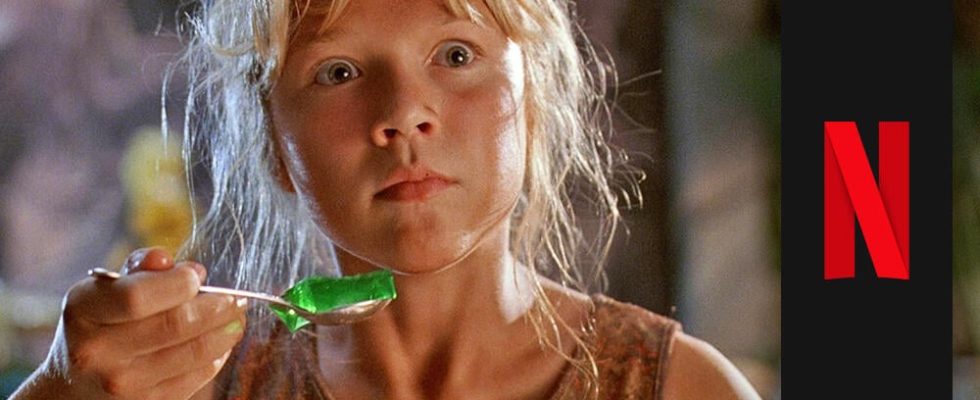If you want to watch neat monster action with a dash of science fiction tonight, you can’t go wrong with Steven Spielberg’s Jurassic Park. The blockbuster is currently streaming on Netflix and Amazon Prime Video* catalogues.
Thirty years later, the success of the dinosaur adventure seems almost self-evident, but after you delve into the history of its creation, that assessment changes. This is especially true at the end of Jurassic Park. Until shortly before shooting it should look completely different – because the most famous Dino was missing in the original plans.
At the end of Jurassic Park, the T. rex wasn’t supposed to be there at all
That’s what happens in the movie
In the finale, Alan Grant (Sam Neill), Ellie Sattler (Laura Dern) and the kids flee from the raptors at the park’s visitor center. They climb over a T. rex skeleton. Once at the bottom, they are encircled. But at the last second, the (alive) Tyrannosaurus rex storms into the atrium and kills the raptors. As the helpless humans escape, the T. rex shows who’s really in charge.
This is what happens in the original ending
The original ending to Jurassic Park didn’t even feature the T. rex rescue. In this version, too, the people flee into the atrium and climb over the skeleton.
Here you can see the storyboards of the original ending in motion:
At this point you will find external content from YouTube, which complements the article. You can show it and hide it again with one click.
However, the raptors are repelled differently: they are crushed by bones and shot by park founder John Hammond. People help themselves.
How did the change come about?
Steven Spielberg wanted to see the T. rex again
When Steven Spielberg began adapting Michael Crichton’s bestselling Dino Park, computer-generated effects were an untested innovation. You can see that in the finished film. Only about four of the 127 minutes running time consist of CGI. The dinosaur inserts were mainly implemented with animatronic dolls. However, the more Spielberg saw of the CGI dinosaurs, the more convinced he was. That’s why he decided to change the final action sequence of Jurassic Park just before shooting.
Assistant director John T. Kretchmer revealed the sequence of events at a Q&A marking the film’s 25th anniversary (via No Film School):
Steven came to us during the shooting of the sequence and said: ‘I think we need to bring the T. rex back. The audience will definitely want to see the T. rex.’
However, these changes not only required computer power in the halls of Effektschmiede Industrial Light and Magic (ILM), but also an adjustment of the set on site. After all, the T. rex should now throw a raptor at its ancestor’s skeleton. Effects specialist Michael Lantieri had to adjust everything within 24 hours to allow for the spontaneous inspiration. Spielberg gave the cast new instructions on who should stand where. It all happened spontaneously, without storyboards, as Slash Film tells it.
Universal
A spontaneous inspiration: The end of Jurassic Park
The result of this intuition is one of the film’s most recognizable scenes, which not only improves it because of the Tyrannosaurus rex’s majestic size. The idea that people are saved by accident also fits perfectly with the narrative motifs of Jurassic Park.
Human hubris is stopped by nature. In this finale they are little more than extras in the battle of primeval monsters.
*. If you make a purchase through these links or sign up for a subscription, we will receive a commission. .
